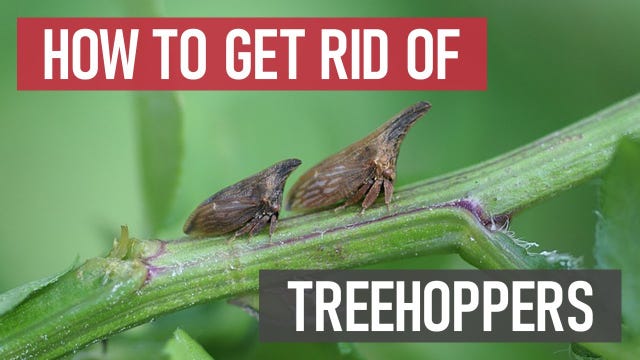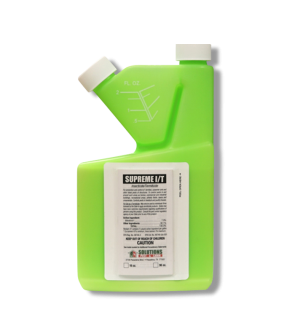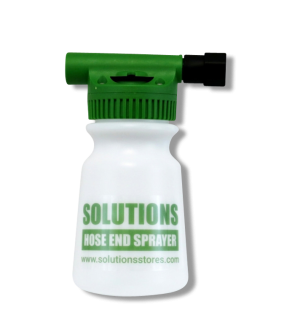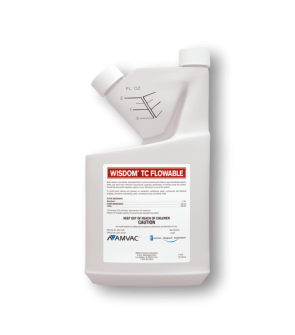Gain access to personalized product screening, the best pricing, rewards, and more!
Most Effective Products
Treehopper Control: How To Get Rid of Treehoppers
This page is a general treehopper control guide. Using the products and methods suggested, you will get control of treehoppers. Follow this guide and use the recommended products, and we guarantee 100% control over treehoppers.
Treehoppers, also known as thorn bugs, from the family Membracidae, are tiny sap-sucking insects famous for their bizarre, thorn-like appearances. These creatures have evolved a remarkable pronotum a helmet-like extension behind their heads that mimics thorns, buds, leaves, or even fungus.
Beyond their looks, treehoppers exhibit fascinating behavior. Some species form symbiotic relationships with ants, offering sweet honeydew in exchange for protection. The female will also guard her eggs against predatory pests, which is uncommon among most insect species. Although treehoppers are more closely related to cicadas than to grasshoppers, they share the ability to leap quickly using their powerful hind legs. This hopping behavior, along with their tree-dwelling lifestyle, inspired the name treehopper.
While treehoppers play interesting roles in ecosystems, they aren’t always harmless. In large numbers, certain treehopper species can become agricultural pests. They feed by piercing plant stems and sucking sap, which weakens plants and can lead to stunted growth or deformities. Some species also act as vectors for plant diseases, spreading pathogens as they feed. In crops like legumes, tomatoes, and fruit trees, treehopper infestations can result in economic losses for farmers.
Treehoppers are a striking example of nature's creativity, with their unusual shapes, clever camouflage, and intricate relationships with other species. But while they may appear to be nothing more than harmless thorns, their potential to damage crops and plants makes them a double-edged sword. By understanding both their fascinating traits and their risks, we can better appreciate these insects and take action when necessary.
Dealing with a treehopper infestation? Our DIY guide below offers expert tips and trusted product recommendations to help you protect your property and regain control.
Identification
Before proceeding with treatment, you must ensure you’re dealing with treehoppers. Misidentification can lead you to use the wrong treatment products and waste time and money. With over 3,000 known treehopper species worldwide, there are some common traits that we'll go over below to aid in identification.

- Treehoppers are small, wedge-shaped insects belonging to the family Membracidae, a group closely related to cicadas and leafhoppers. Like their relatives, they have short, bristle-like antennae, three-segmented feet, and similar wing and leg structures. What truly sets treehoppers apart is their large, often elaborate pronotum the first segment of the thorax, which extends backward over the abdomen and sometimes forward over the head. This structure can resemble a thorn, hump, spike, or even more fantastical shapes, serving primarily as camouflage. These thoraxes or "helmets" will vary in appearance from species to species. Some appear simple, while others will feature horn-like growths in bizarre shapes.
- Adults are typically less than 1/2 inches long and range in color from brown, gray, or black to vibrant leaf-green, sometimes with contrasting patches, raised textures, or jagged surfaces. Depending on the species, some treehoppers can be 3/4 inch in length.
- Nymphs often appear more bristly or spiny, especially along the back and legs. Both adults and nymphs have rows of spines on their hind tibiae and are quick to jump when disturbed, using their powerful hind legs for escape.
Use the description and image above to identify treehoppers in your yard correctly. If you are unsure, contact us, and we will try to assist you with correct identification.
Inspection
Once you have confirmed that you have treehoppers, you can proceed with an inspection. It would be best to look for areas where the treehoppers are concentrated and gauge how severe an infestation you have to better focus pesticide applications.

Where To Inspect
Each species is typically associated with particular food plants, and identifying the plant a treehopper is feeding on is often key to determining its species.
Treehoppers are most often found on stems, branches, and leaf undersides of specific host plants, where they feed on sap using their piercing-sucking mouthparts. They are especially common on young shoots, plant nodes, or branch crotches areas where the plant tissue is tender and sap-rich.
Treehoppers enhance their camouflage not just through color and shape but through behavior as well: they remain motionless in spots where a thorn or plant wart would naturally appear, such as along twig forks, petioles, or stems. When multiple treehoppers gather in a group, their collective disguise can be strikingly effective looking like a natural cluster of thorns or plant growths.
You’re most likely to find them in dense vegetation, tree, shrubs, gardens, hedgerows, or along the edges of wooded areas, or other various plants where their preferred host plants are abundant.
What To Look For
Treehopper damage is often subtle but can be identified by several key signs on affected plants. Because treehoppers feed by piercing plant stems and sucking sap, you may notice yellowing or wilting leaves, stunted growth, or deformed shoots and leaves.
In some cases, the feeding sites develop small swellings, bumps, or galls where the insect’s saliva causes the plant tissue to react. Feeding from this pest can also create small wounds or punctures in the bark of foliage.
You might also observe an increase in ant activity, as ants are attracted to the sugary honeydew that treehoppers excrete. On fruit trees and crops, treehopper damage can reduce yield and overall plant vigor, making early detection important for effective control.
Treehoppers are often found in clumps or small groups on foliage, especially during their nymph stages. These clusters tend to gather on stems, leaf petioles, or branch crotch places where they can feed safely and benefit from their camouflage. Grouping together enhances their disguise, making them look like a cluster of thorns or plant growths, which helps protect them from predators.
Treatment
Once you have confirmed treehopper activity, it is time to begin treatment. Remember to read all product labels, follow the application instructions on them, and wear personal protective equipment (PPE) to stay safe.
To effectively control treehoppers, several insecticides containing specific active ingredients are commonly used. Chemicals such as imidacloprid, bifenthrin, carbaryl, malathion, and permethrin have proven effective in managing treehopper populations.
Physical removal by pruning heavily infested branches can help reduce their numbers, but avoid overpruning, as removing too much foliage can stress the plant and make it more vulnerable to other pests and diseases.
For more serious infestations, using an insecticide like Supreme IT, which contains powerful active ingredients such as bifenthrin to target insects, can provide fast and lasting control.
Step 1: Mix and Apply Supreme IT

Determine how much Supreme IT you will need by measuring the square footage of your treatment area. Measure the treatment area's length and width in feet, then multiply them together (length x width = square footage).
You will need to mix this product with water in a handheld pump sprayer or backpack sprayer. To cover large treatment areas and higher tree canopies, we recommend you apply this product with the Solutions Hose End Sprayer.
We recommend using a general application rate of 1 fl. oz. of Supreme IT per 1 gallon of water per 1,000 sq. ft.
Load a handheld pump sprayer with the appropriate amount of water and Supreme IT. Start by filling halfway with the required amount of water, then add the Supreme, followed by the remaining half of water. Close the sprayer lid and agitate to ensure the product is well-mixed.
For hose-end sprayer use, pour the measured amount of Supreme IT into the hose-end sprayer, but do not add water yet. Attach to the end of a garden hose and twist until secure. Spray until the appropriate amount of water is mixed in with the solution.
Spray the solution directly on the stems, branches, and undersides of leaves where treehoppers commonly feed and hide. Focus especially on areas like young shoots, leaf petioles, and branch crotches, since these spots often harbor treehopper clusters.
Be sure to thoroughly cover all infested parts of the plant to reach both adults and nymphs. Do not spray to the point of runoff.
This product may be applied to the trunk of woody ornamentals, trees, shrubs, ground cover, bedding plants, foliage plants, flowers, and non-bearing fruit and nut trees.
Do not apply Supreme IT directly on food crops that are actively growing and will be harvested.
However, you can apply to non-bearing crops or perennial crops that will not produce harvestable raw agricultural commodities during the season of application.
Keep people and pets out of the treated area until the spray has dried.
Prevention
No treatment plan is complete without preventative measures. Prevent treehoppers from reappearing with the following preventative methods:

- To prevent treehopper infestations, focus on maintaining healthy plants and creating an environment that discourages their buildup. Regularly inspect your plants for early signs of treehoppers so you can address problems before they escalate.
- Keep your garden clean by removing weeds, fallen leaves, and plant debris where treehoppers might hide or lay eggs. Inspect for loose wood, as pests often use them as harborages. Pick up and remove any leaf litter or wood debris around the outside of your home. Prune lightly to improve air circulation and remove heavily infested or damaged branches to reduce treehopper habitats, but avoid overpruning, which can stress plants and make them more vulnerable.
- Avoid over-fertilizing, as excessive new growth attracts treehoppers.
- Using physical barriers like fine mesh netting on vulnerable plants during peak seasons can also help keep treehoppers away.
- Healthy, well-watered plants are better able to withstand insect feeding and recover from damage. We recommend watering with no more than 1 inch of irrigation once per week. Best to do so in the early morning to give the water enough time to absorb into the plants. Sometimes watering can discourage breeding and other activities on foliage as well as dislodging treehoppers from foliage.
- We recommend performing quarterly treatments of Supreme IT during the late spring to early fall, typically from May to September, when these pests are most active. Supreme IT lasts for up to 90 days, so one application every 3 months will provide year-round protection against these pests and others.
Key Takeaways
What Are Treehoppers?
- Treehoppers are small, sap-feeding insects known for their distinctive, often thorn-like pronotum that helps them blend into plant stems and branches.
How to Get Rid of Treehoppers
- To get rid of treehoppers, regularly inspect your plants and remove infestations by pruning and using insecticides like Supreme IT.
Prevent Treehopper Reinfestations
- To prevent treehopper infestations, maintain healthy plants, prune lightly to reduce habitats, and keep your garden clean of debris where treehoppers hide. Avoid over-fertilizing and consider using physical barriers like fine mesh netting during peak seasons. Regular watering, especially in the early morning, helps plants recover and can discourage treehopper activity. Be sure to also make quarterly treatments with Supreme IT.












